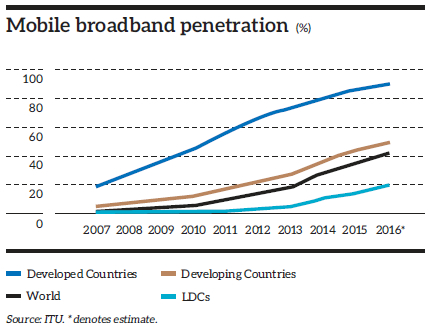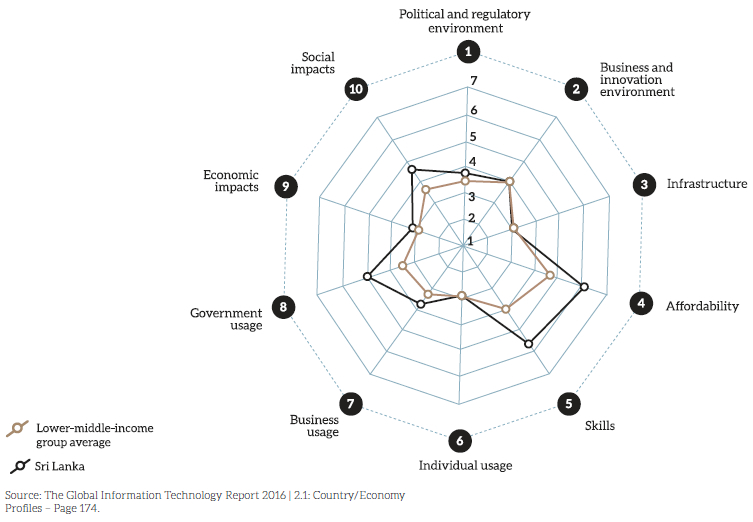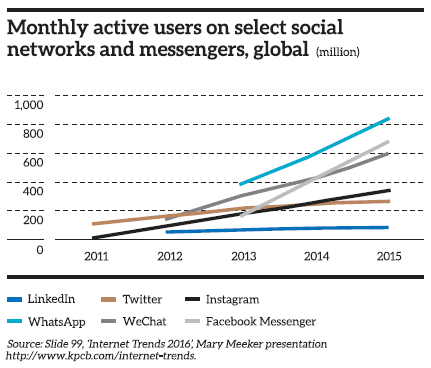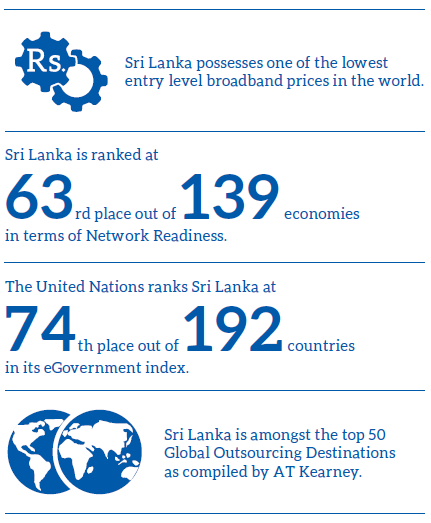The Global Telecommunications Industry
Despite the world making continual leaps and bounds to advance the usage of new technologies amongst its entire populace, the world faced several challenges during the year when achieving set goals. As of January 2017, 53% of the world’s population is not using the Internet. Four-fifths of this segment falls under the Asia-Pacific and Africa regions. 85% of the population of least-developed countries (LDCs) are without Internet access compared with 22% in developed countries (ITU, Connecting the Unconnected, 2017).

Source: Adapted from ‘Connecting the Unconnected’ by Imme Philbeck; 2017.
Research has identified multiple reasons for these discordances; namely infrastructure, capability, relevance and affordability. Broadly speaking, developing countries experience the issue of relevance (i.e. the fact if the population is predisposed and willing to accept the benefits of technology amongst other factors); whereas developed countries struggle to meet the question of affordability. A detailed analysis shows that the Asia-Pacific region is faced with a nuanced mix of issues in relevance, infrastructure and affordability (ITU, Connecting the Unconnected, 2017).
To address the above and more, the International Telecommunications Union (ITU) continues to implement its Connect 2020 Agenda. According to Target 1.2 of this, they aim to ensure that 60% of global individuals will be utilising the Internet by 2020. Nonetheless, in accordance with current trends, the ITU forecasts the following. The majority of individuals coming online will be living in regions covered by ICT infrastructure. They will similarly be chiefly from urban areas, and geographically-speaking from the Americas and the Asia-Pacific region. Finally, they are likely to not be amongst the very poor (ITU, Connecting the Unconnected, 2017).

The Local Telecommunications Industry

Source: The Global Information Technology Report 2016 | 2.1: Country/Economy Profiles
In 2016, Sri Lanka recorded a Network Readiness Index of 4.2; ranking it at 63rd place out of 139 economies. This was a jump up from the 65th place recorded in 2015. Sri Lanka also ranks the highest amongst SAARC countries in this category; and outperformed the average for lower middle income countries in eight of the ten assessed metrics. It was only in infrastructure and individual usage that the country lagged behind the stated average.
Sri Lanka possesses one of the world’s lowest entry level fixed broadband product prices as cited by the ITU. It is also one of the first countries to minimise the gap between the actual bandwidth offered to the subscriber and the actual speed of the delivered service (QoS). The country continues to emerge as a global IT: BPO destination of choice in numerous domains. The country is amongst the Top 50 Global Outsourcing Destinations as compiled by AT Kearney, bearing testimony to the strength of the local ICT industry. The United Nations similarly ranks Sri Lanka at 74th place out of 192 countries in its eGovernment Index.
Challenges in the Industry
As in the preceding years, we witness declining revenues in the traditional arenas of the telecommunications industry owing to the influence of global OTT operators. These players utilise networks to deliver services to domestic users with no corresponding income being delivered to the local operators. We can witness similar trends in the grey market of the ICT industry. We equally need to act swiftly to secure new opportunities in the ever-changing dynamics of the industry if we are to earn desired returns on investments. Finally, there is the omnipresent issue of balancing costs, as labour becomes more expensive, reducing prices becomes challenging and new budgetary constraints (tax regimes and floor rates) move onto the arena.

Opportunities in the Industry
Following on from the increase in economic development of the country, we expect an influx of investors and projects into Sri Lanka. Thus, when they wish to commence operations; SLT is geared to furnish them with any and all solutions pertaining to the communications infrastructure. We possess many things that are packaged as value-added services, for example business process outsourcing (BPO) operations. The sum of all these requirements can be outsourced on our operating expenditure (OPEX) model, whereupon an investor is free from any liability that may arise with regards to equipment. We equally foresee exciting prospects in the Megapolis Project and its associated ventures.
The rise in economic development of Sri Lanka will drive an influx of investors and projects into the country. SLT is fully-equipped to meet these with cutting edge communications and infrastructure solutions. We equally foresee exciting prospects in the Megapolis Project and its associated ventures.



